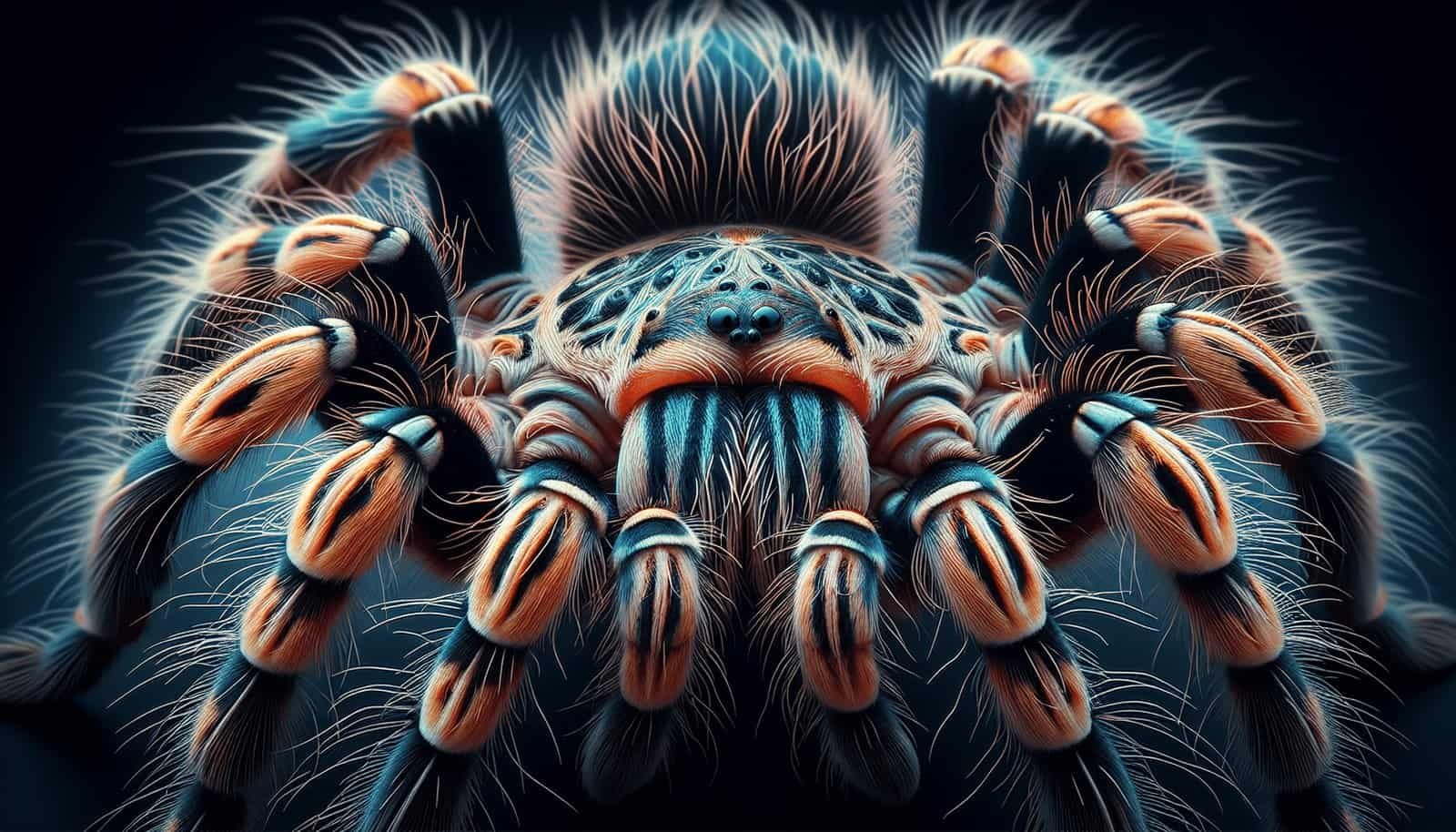If you’re fascinated by the world of tarantulas and have set your sights on breeding rare or endangered species, you may be wondering if there are any special considerations to keep in mind. The answer is yes! Breeding rare or endangered tarantulas requires a delicate balance of knowledge, patience, and dedication. In this article, we will explore the unique challenges and precautions involved in breeding these extraordinary arachnids, providing you with essential insights and tips to embark on this rewarding journey. So, get ready to dive deep into the realm of tarantula breeding and discover the secrets to successfully preserving these captivating creatures.
Choosing the Right Breeding Pair
Breeding rare or endangered tarantula species requires careful consideration and planning. One of the first steps is to understand the genetics of the species you intend to breed. Tarantulas have specific genetic traits that can be inherited, such as color patterns and behavior. Understanding these traits will help you make informed decisions when selecting a breeding pair.
Ensuring genetic diversity is crucial for the long-term health of the tarantula population. Inbreeding can lead to a weakened gene pool and increase the risk of genetic disorders. It is important to choose individuals that are not closely related to avoid complications. Genetic diversity can be achieved by acquiring tarantulas from different geographic locations or by collaborating with other breeders and institutions.
Obtaining legal documentation is essential when breeding rare or endangered tarantula species. Many countries have laws and regulations that protect these species, and it is crucial to comply with them. Ensure that you have the necessary permits and documentation from relevant authorities before proceeding with your breeding program. This will help protect the species and avoid any legal and ethical complications.
Creating the Optimal Breeding Environment
Creating the optimal breeding environment is crucial for the success of your breeding program. Temperature and humidity control are critical factors in maintaining the health and well-being of tarantulas. Research the specific temperature and humidity requirements of the species you are breeding and ensure that their environment is appropriately regulated.
Providing sufficient space is essential for the comfort and natural behavior of tarantulas. The enclosure should be large enough to accommodate the breeding pair comfortably, allowing them to move, build webs, and establish territories. Insufficient space can lead to stress and aggression among the tarantulas, which can impact their reproductive behavior.
Creating hiding places within the enclosure is important for the tarantulas, as they are naturally shy and reclusive animals. The availability of suitable hiding places, such as logs, rocks, or burrows, will help the breeding pair feel secure and reduce stress. It is important to provide a variety of hiding spots to accommodate the different preferences of each tarantula.
Maintaining cleanliness is crucial for the overall health and hygiene of the breeding environment. Regularly clean the enclosure, remove any uneaten prey, and change the substrate as needed. A clean environment reduces the risk of disease and promotes the overall well-being of the tarantulas.

Diet and Nutrition
Proper diet and nutrition play a significant role in the health and reproductive success of tarantulas. Researching the natural diet of the species you are breeding is essential. Tarantulas have specific feeding preferences, ranging from insects to small vertebrates. Understanding their dietary requirements will help you provide a balanced and appropriate diet.
Balancing nutritional requirements is important to ensure that the tarantulas receive all the necessary nutrients. A well-balanced diet should include a variety of prey items that are nutritionally rich, such as crickets, mealworms, and roaches. It is important to offer a varied diet to prevent nutritional deficiencies and promote optimal health.
Supplementing with vitamins and minerals may be necessary for some tarantula species. Consult with a veterinarian or experienced tarantula breeder to determine if your species requires any additional supplementation. Vitamin and mineral supplements can be added to the prey items or provided in the form of specialized supplements designed for tarantulas.
Reproductive Behavior Observation
Observing the reproductive behavior of the breeding pair is crucial to determine the optimal mating time. Tarantulas have specific behaviors and rituals associated with mating. Determining the mating readiness of the female is essential to avoid potential aggression or rejection by the male.
Recognizing courtship rituals is important to ensure successful mating. The male tarantula performs specific movements and displays to attract the female. These rituals can be species-specific, so it is important to research and observe the specific courtship behaviors of the tarantula species you are breeding.
Monitoring for successful mating is necessary to confirm that fertilization has occurred. After a successful mating, the female will produce an egg sac within a few weeks. Regularly monitor the female for signs of an egg sac and document the date of mating to track the gestation period.

Egg Laying and Incubation
Creating suitable nesting conditions is essential for the egg-laying process. Provide the female tarantula with a suitable substrate and a secure hiding spot to lay her eggs. The nesting area should mimic the tarantula’s natural environment to promote a successful egg-laying process.
Collecting and handling eggs should be done with caution to avoid damage. Use clean, sterile utensils when handling the eggs to minimize the risk of contamination. Carefully transfer the eggs to a separate incubation container, ensuring that the temperature and humidity are appropriate for the specific species.
Incubating eggs at the right temperature is crucial for their development. Research the optimal temperature range for the tarantula species you are breeding and ensure that the incubation container maintains a consistent and appropriate temperature. Proper temperature control will promote successful hatching and increase the chances of healthy spiderlings.
Caring for Spiderlings
Separating spiderlings from adults is important to prevent cannibalism and provide appropriate care. Once the spiderlings have hatched, carefully remove them from the incubation container and transfer them to individual enclosures. Ensure that each spiderling has a suitable enclosure with adequate space, hiding places, and proper humidity.
Providing appropriate enclosures for the spiderlings is crucial for their well-being and development. The enclosures should be small enough to prevent the spiderlings from escaping and large enough to accommodate their growth. Use a suitable substrate, such as peat moss or vermiculite, and regularly mist the enclosure to maintain the required humidity.
Feeding small prey is necessary to meet the nutritional needs of the spiderlings. Offer appropriately sized prey items, such as fruit flies or pinhead crickets, that can be easily caught and consumed by the spiderlings. Avoid overfeeding or providing prey that is too large, as this can lead to choking or unsuccessful molting.
Avoiding cannibalism among spiderlings is essential to ensure their survival. Spiderlings are known to cannibalize their siblings, especially when resources are limited. Provide ample food, space, and hiding places to reduce the chances of cannibalistic behavior. Move spiderlings to individual enclosures if you notice any signs of aggression or cannibalism.

Managing Breeding Records
Keeping detailed breeding logs is crucial for tracking the progress and success of your breeding program. Maintain comprehensive records of mating dates, egg-laying dates, and incubation conditions. This information will help you analyze patterns and make informed decisions for future breeding attempts.
Tracking lineage and parentage is important when breeding rare or endangered tarantula species. Accurate records of the parentage of spiderlings will help maintain genetic diversity and avoid inbreeding. Keep track of the breeding pairs and their offspring, including any relevant genetic information or traits.
Recording growth and development is essential for monitoring the health and progression of the spiderlings. Regularly measure and document the growth of each spiderling, noting any milestones or significant changes. By maintaining detailed growth records, you can identify any potential health issues or abnormalities.
Collaborating with Other Breeders and Institutions
Sharing knowledge and experiences with other breeders and institutions can be beneficial when breeding rare or endangered tarantula species. Joining online forums or professional organizations dedicated to tarantula breeding can provide valuable insights and support. By collaborating with others, you can exchange information, discuss breeding challenges, and enhance the success of your breeding program.
Participating in breeding programs organized by institutions or conservation organizations is an effective way to contribute to tarantula conservation efforts. These programs often focus on the breeding and reintroduction of endangered species to their natural habitats. By participating in such programs, you can help preserve these species for future generations.
Contributing to conservation efforts is an important responsibility for tarantula breeders. Educate yourself about the conservation status and challenges faced by rare or endangered tarantula species. Raise awareness about the importance of conservation, support conservation initiatives financially or through volunteering, and promote responsible breeding practices within the tarantula community.

Dealing with Challenges and Risks
Breeding rare or endangered tarantula species comes with its share of challenges and risks. Handling potential health issues requires vigilance and knowledge. Be familiar with the common health issues that can affect tarantulas and seek advice from experienced tarantula breeders or veterinarians if any concerns arise. Promptly address any health issues to ensure the well-being of the breeding pair and their offspring.
Preparing for breeding failures is essential as not all breeding attempts will be successful. Document and analyze unsuccessful attempts to identify any areas for improvement. Be patient and persistent, as breeding rare or endangered tarantula species may require multiple attempts before achieving success.
Addressing threats from predators is crucial to ensure the safety and survival of the breeding tarantulas and their offspring. Use appropriate enclosures that provide sufficient security and protection from potential predators, such as birds or other animals. Regularly inspect the enclosures for any signs of damage or weakness.
Managing legal and ethical considerations is essential when breeding rare or endangered tarantula species. Ensure that your breeding activities comply with local and international regulations. Research the specific laws and guidelines pertaining to the species you are breeding, obtain the necessary permits, and adhere to conservation guidelines to protect the tarantulas and avoid any legal or ethical issues.
Securing Permits and Legal Compliance
Researching local and international regulations is crucial to understanding the legal requirements for breeding rare or endangered tarantula species. Many countries have laws and regulations in place to protect these species and prevent illegal trade. Familiarize yourself with the specific regulations in your region, as they may vary.
Applying for necessary permits is a critical step in breeding rare or endangered tarantula species. Contact the relevant authorities or governing bodies to inquire about the specific permits required for breeding and handling these species. Provide all the necessary documentation, including information about your breeding program and the intended purpose.
Adhering to conservation guidelines is essential to ensure that your breeding practices are ethical and sustainable. Familiarize yourself with any conservation guidelines provided by international organizations or conservation-focused institutions. These guidelines can provide valuable insights into best practices and help you contribute to the conservation of rare or endangered tarantula species.
